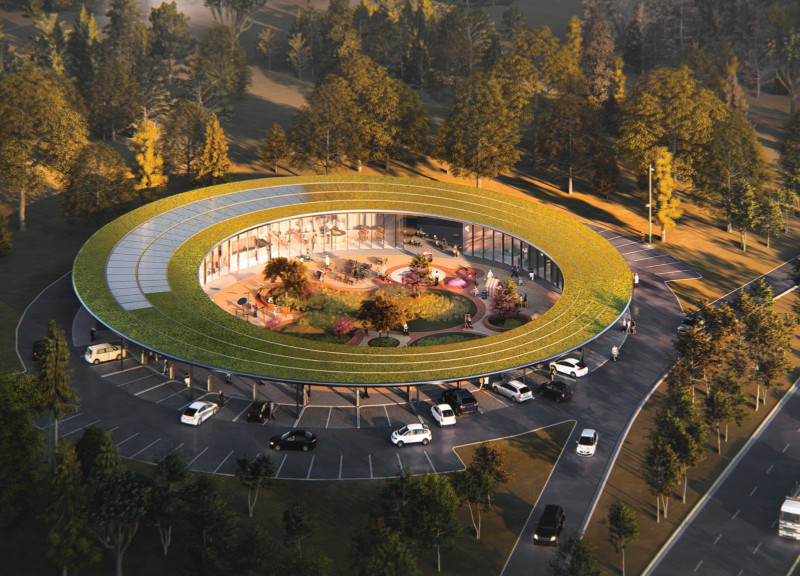5 key facts about this project
This project functions primarily as a community hub, intended to foster social interactions and engagement among its users. By providing shared spaces for gatherings, activities, and communal functions, the design encourages a sense of belonging and inclusiveness. The layout is meticulously planned, with a flow that guides visitors seamlessly through various zones, each serving a unique purpose while contributing to the overall atmosphere of the space.
Key elements of the design include expansive open areas that promote light and air flow, coupled with intimate corners that allow for personal reflection and quiet interactions. The architect has skillfully integrated natural elements into the design, utilizing landscaping that complements the built form and enhances the overall experience of the environment. Vertical and horizontal lines are balanced, creating a rhythm that is visually appealing and invites exploration.
Materiality plays a crucial role in reinforcing the project's identity. The use of sustainably sourced wood, glass, and exposed concrete fosters a warm and inviting atmosphere, while also emphasizing durability and resilience. Each material is selected not only for its aesthetic qualities but also for its performance and adaptability to the local climate. The transparency offered by large glass panels allows for uninterrupted views of the surrounding landscape, blurring the lines between indoor and outdoor spaces.
Unique design approaches are apparent throughout the project. The architect has employed passive design principles, optimizing natural daylighting and ventilation to reduce energy consumption. The innovative use of space is evident in the multifunctional areas, which can easily transition between uses, adapting to the needs of the community over time. The thoughtful placement of windows and overhangs illustrates an understanding of solar paths, enhancing the comfort of the occupants while minimizing reliance on artificial lighting and heating.
Moreover, the project's relationship with its surroundings underscores a commitment to environmental stewardship. Features such as green roofs and rain gardens not only mitigate stormwater runoff but also contribute to local biodiversity. By incorporating these sustainable practices, the design highlights the importance of ecological responsibility in contemporary architecture.
In addition to these elements, the project does not shy away from being a conversation starter within the community. By embracing local cultural references in its design vocabulary, it encourages pride in the local identity and invites residents to engage with the space and each other. The integration of public art elements and local craftsmanship into the project further enriches the narrative, making the architectural experience both visually stimulating and culturally relevant.
This architectural project stands as a testament to the potential of design to shape communities positively. Its careful consideration of function, space, and environmental impact creates an environment conducive to both personal and communal growth. To explore this project further, readers are encouraged to review the architectural plans, sections, and designs that provide deeper insights into its thoughtful conception and realization. Engaging with these elements will undoubtedly reveal the layers of creativity and intention woven throughout the project’s fabric.


 Selçuk Ki̇şmi̇r
Selçuk Ki̇şmi̇r 




















